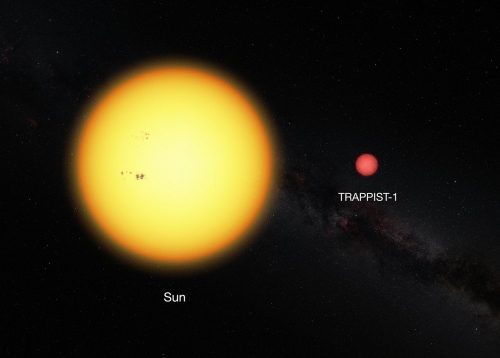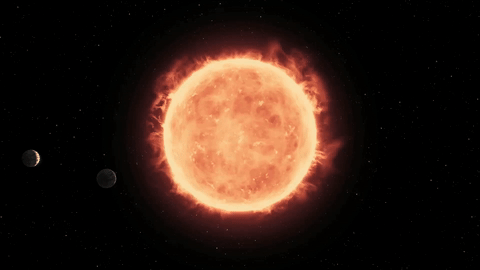ScienceRocks
Democrat all the way!
- Banned
- #1
A Deeper Look at TRAPPIST-1
Awesome news!!!! This makes sense as both b and c have earth radius's. The D planet is the one that is probably habitable, but it is about the same size as the two inner ones.
“We thought, maybe we could see if people at Hubble would give us time to do this observation, so we wrote the proposal in less than 24 hours, sent it out, and it was reviewed immediately. Now for the first time we have spectroscopic observations of a double transit, which allows us to get insight on the atmosphere of both planets at the same time.”
The result: A combined transmission spectrum of TRAPPIST-1b and c, meaning the team could analyze the atmospheres of both worlds as the transit occurred. The transmission spectrum was featureless, the data sufficient to show that both transiting planets have relatively compact atmospheres rather than large, gaseous envelopes like Jupiter and Saturn. That would imply rocky planets like the terrestrial worlds — Mars, Earth, Venus — in our own Solar System.

Image: Comparison between the Sun and the ultracool dwarf star TRAPPIST-1. Credit: ESO.
That’s a useful insight because we have no other information about the nature of these planets. Their masses have not been measured, and we have no other data about the kind of planets that can exist around ultracool dwarf stars (TRAPPIST-1 is an M8 dwarf) because the TRAPPIST-1 worlds are our first transiting example.
The excerpt below shows the team’s reasoning, building on the fact that the lack of features in the combined spectrum rules out certain kinds of atmospheres:
…the first observations of TRAPPIST-1’s planets with HST allow us to rule out a cloud-free hydrogen-dominated atmosphere for either planet. If the planets’ atmospheres are hydrogen-dominated, then they must contain clouds or hazes that are grey absorbers between 1.1 μm and 1.7 μm at pressures less than around 10 mbar. However, theoretical investigations for hydrogen-dominated atmospheres predict that the efficiencies of haze and cloud formation at the irradiation levels of TRAPPIST-1b and TRAPPIST-1c should be dramatically reduced compared with, for example, the efficiencies for GJ 1214b… In short, hydrogen-dominated atmospheres can be considered as unlikely for TRAPPIST-1b and TRAPPIST-1c.

Image: The binary transit visualized. Credit: NASA/ESA/STScl.
With an extended gas envelope ruled out, we wind up with a range of possible atmospheres, ranging from the CO2-dominated Venus to an Earth-like atmosphere with heavy clouds or a depleted atmosphere like what we see on Mars. To push further into the possibilities, the team has formed a consortium called SPECULOOS (Search for habitable Planets Eclipsing ULtra-cOOl Stars), the good news being that they are building larger versions of the TRAPPIST instrument in Chile that will focus on the brightest ultracool dwarf stars in the southern hemisphere. Consider the effort an attempt to build the kind of pre-screening tools that our future space telescopes like the James Webb instrument will need for their target list.
Awesome news!!!! This makes sense as both b and c have earth radius's. The D planet is the one that is probably habitable, but it is about the same size as the two inner ones.
